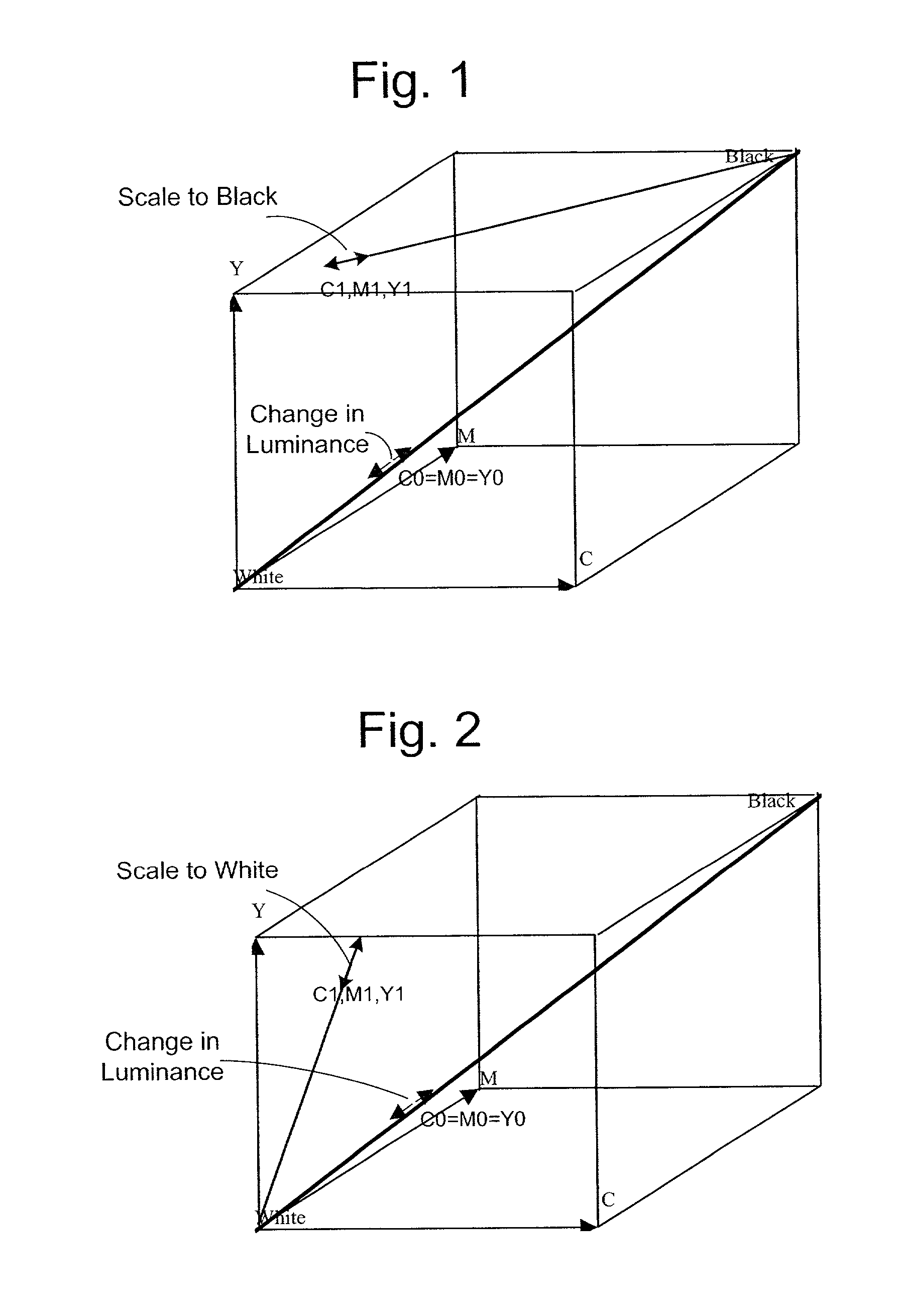Embedding digital watermarks in spot colors
a digital watermark and spot color technology, applied in the field of digital watermarking spot color media, can solve the problems of poor first approach, one conventional approach often fails to solve these problems,
- Summary
- Abstract
- Description
- Claims
- Application Information
AI Technical Summary
Benefits of technology
Problems solved by technology
Method used
Image
Examples
first embodiment
[0024]Our inventive methods are directed toward watermarking images printed with spot color inks. In a first embodiment, to embed a digital watermark in an original spot color (S), we replace the original spot color (S) with a combination of CMY inks (Cm, Mm, Ym) and a scaled or halftone screened version (Sm) of the spot color (S). The screened spot color (Sm) is preferably a percentage of the original spot color (S) intensity (FIG. 3). We also refer to this process as “filling” or “filling-in” a spot color.
[0025]With reference to FIG. 4, for a given pixel (or other image area), a CMYK value is determined to approximate the original spot color (S), as shown in step S1. This CMYK approximation is preferably converted to a CMY approximation by a known black recombination equation or method (step S2). The resulting CMY approximation is represented as (Cs, Ms, Ys).
An example of a recombination method is provided in Equation 2, below: β=0.01Cs=C+K-βCKMs=M+K-βMKYs=Y+K-βYK(2)
Of...
second embodiment
[0035]Accordingly, we have developed a second embodiment in which part or all of an original spot color is screened back, e.g., using one of the halftoning techniques mentioned above. This method focuses on manipulating the original spot color instead of supplementing or filling in the spot color with CMY or CMYK process inks.
[0036]With reference to FIG. 5, an original spot color is screened back to a percentage of its original intensity (S10). Most often this screening back process is accomplished in a digital domain, in which the spot color is represented as an intensity percentage or as a color level. Of course physical screening processes are well known as well. The intensities (or luminance) at various image areas in the screened-back spot color are modulated (or varied) to embed positive and / or negative watermark signal components therein (S12). For example, an intensity percentage can be shifted up or down (e.g., “tweaked”) to accommodate a watermark signal component at a giv...
PUM
 Login to View More
Login to View More Abstract
Description
Claims
Application Information
 Login to View More
Login to View More - R&D
- Intellectual Property
- Life Sciences
- Materials
- Tech Scout
- Unparalleled Data Quality
- Higher Quality Content
- 60% Fewer Hallucinations
Browse by: Latest US Patents, China's latest patents, Technical Efficacy Thesaurus, Application Domain, Technology Topic, Popular Technical Reports.
© 2025 PatSnap. All rights reserved.Legal|Privacy policy|Modern Slavery Act Transparency Statement|Sitemap|About US| Contact US: help@patsnap.com



